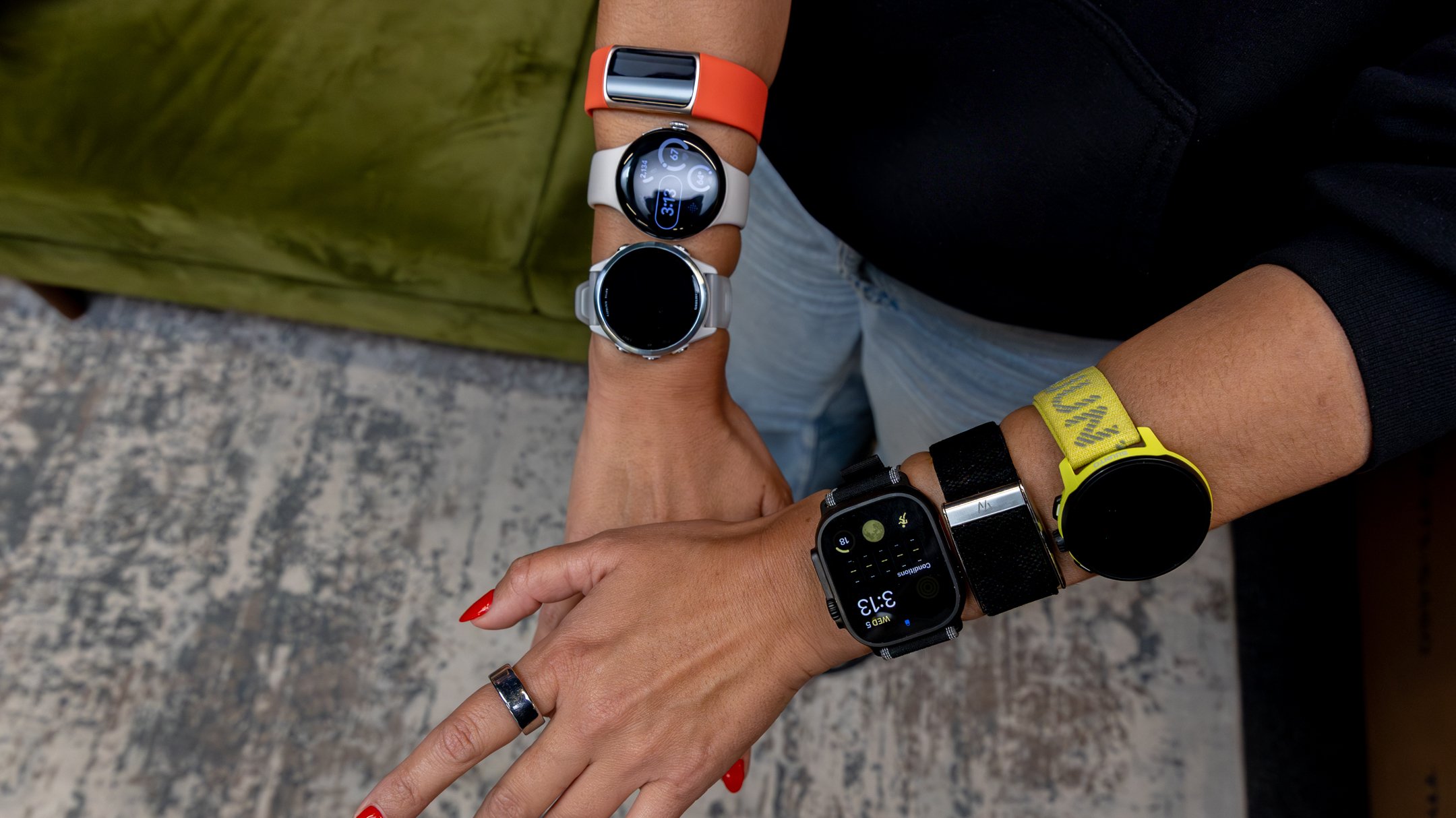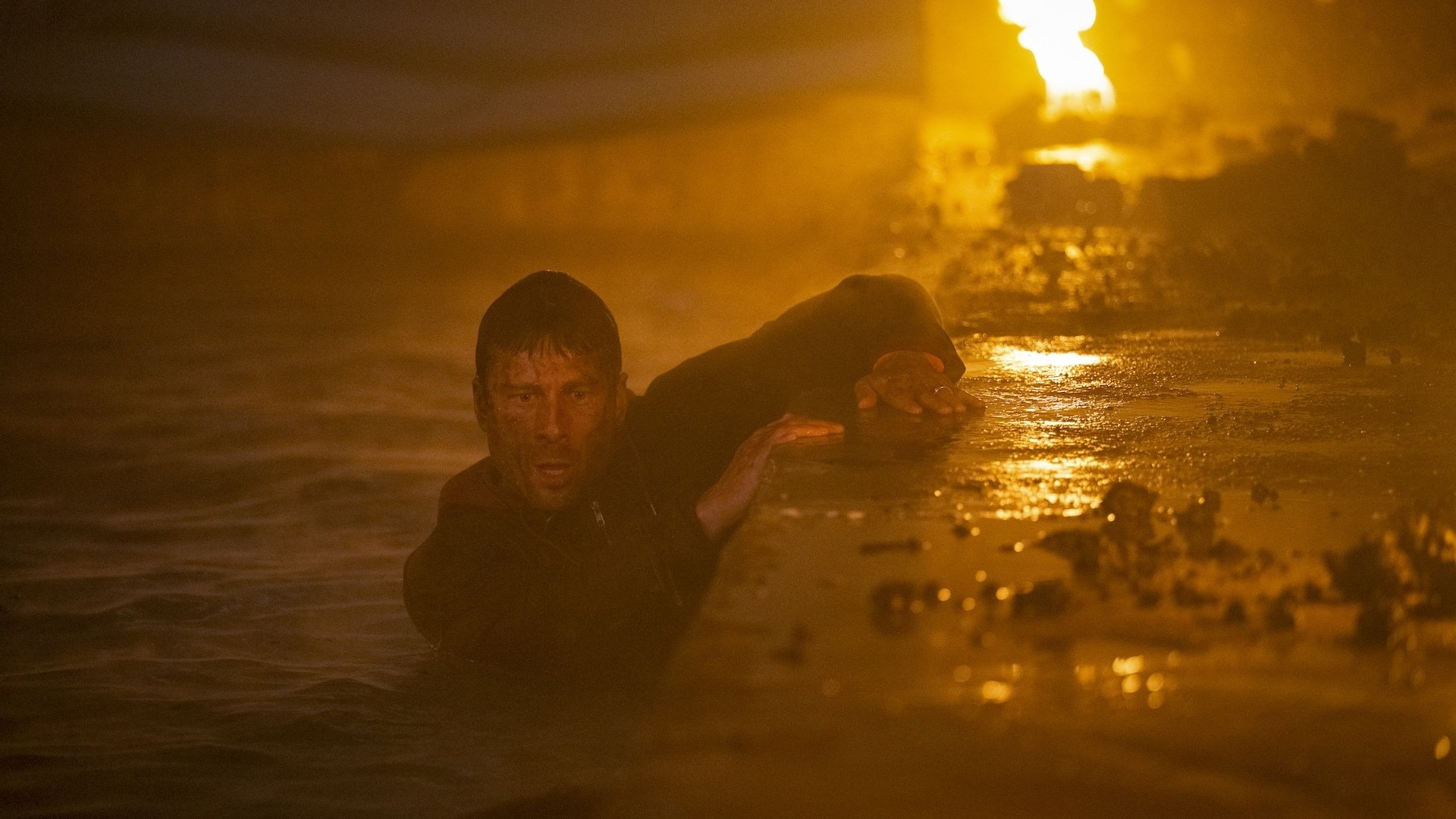I ran the NYC Marathon wearing 7 fitness trackers and they all watched me throw up

People will tell you that you should run a marathon because it’s a mental and physical challenge. People will say it requires dedication and perseverance. People will tell you it encourages community and dares you to test yourself.
But the best reason to run a marathon is to test seven fitness trackers for your job at Mashable dot com. So that’s what I did.
Credit: Christianna Silva / Mashable
Two years ago, I wore an Apple Watch SE during my first New York City Marathon, and it died before I crossed the finish line. Say it with me: Boooooooo.
In its defense, the NYC Marathon is notorious for killing fitness tech because there is so much waiting around before and after.
I started the race in the fourth wave, which means I started running at 10:50 in the morning. But I started my day around 5 a.m., left my apartment at 6 a.m., got to the Staten Island Ferry for a 7:20 departure, and then got on a bus, which took us on a 20-minute drive to the start village, where you walk through security and find your corral. By the time you start, you’ve been on a long, cold journey for hours — and then you have to run 26.2 miles, walk almost a mile out of the marathon finisher area, get to the subway, and find your way home (this took me a little over an hour).
Apple has since improved the battery life of its smartwatches, but the SE dying before I got my medal was a trauma I was unwilling to face a second time.
Credit: Christianna Silva / Mashable
I want a lot out of a fitness tracker (comfort, readability, aesthetics, recovery metrics, workout metrics, a reasonable price), but I need a tracker with an impressive battery life. So, I began my search.
While training for the race, I used 10 different fitness trackers and smartwatches in total. I still had my Apple Watch SE, but upgraded it to the Apple Watch Ultra 2 and, eventually, the Apple Watch Ultra 3. I also tried its Android counterpart, the Pixel Watch 3, which I upgraded to the Pixel Watch 4. I also wore the Garmin Forerunner 570, the Whoop MG, the Suunto Run, the Oura Ring 4, and the Fitbit Charge 6. In total, I ran 508 miles, had 30 weightlifting sessions, rode a bike for 110 miles, and practiced yoga or Pilates about once a week — and did all of that while wearing seven fitness trackers.
In the end, I liked the Apple Watch Ultra 3 the best for actually running the race; the Garmin Forerunner 570 for training; and the WHOOP MG for health data. I wrote all about why in my guide to the best fitness tracker for running a marathon, but now I want to talk about what it was like running the actual race.
Full disclosure: It was messy.
Apple Watch Ultra 3: I love you
Contrary to what many will tell you, the biggest challenge at the New York City Marathon isn’t the hills or the late start time — it’s finding your friends cheering for you on the sidelines. With nearly 60,000 runners and more than two million spectators, it’s not easy to find your friends. Enter: the Notes app.
Credit: Christianna Silva / Mashable
To be completely honest, I find the size of the Apple Watch Ultra 3 to be a negative quality. It’s massive, it’s bright, and that’s kind of annoying during a normal day around the house or, god forbid, a Pilates class. But during the marathon, I discovered the size really is a feature, not a bug. The notes in your iPhone’s Notes app are automatically uploaded to your watch, and because it’s larger and brighter than anything I’ve ever put on my wrist, it’s really easy to read, even after you’ve run 26 miles.
In general, that’s what I liked about the Apple Watch during this race. It’s easy to see texts from your friends, it’s easy to text back, it’s easy to check your notes app, and it’s also really easy to see your pace and time. The significant size and brightness of the watch showed up.
Whoop MG 4.0: Thank you for the validation
Looking at my stress monitor on the Whoop MG 4.0 wasn’t what I would call “helpful.” The Whoop MG is a great tool for long-term training — it shows you how much your body can handle for a future workout, how much you can push yourself, and recommends when you should pull back. For me, it helped me recognize patterns. For instance, I tend to sleep better when I smoke weed, spend time outside, and connect with friends and family; caffeine doesn’t have nearly the impact on my body readiness that I thought it would; and it takes me a lot longer to recover from a single beer with dinner than I thought.
So I didn’t anticipate that it would be the most useful device for actually running a marathon, and I was right. There’s no screen or display, no GPS, and no immediate heart rate feedback during workouts, which makes it essentially useless for live training metrics.
Then I threw up.
This is not an uncommon experience for the New York City Marathon, but it is for me. I have a stomach of steel. It never fails me. And here, after 18 weeks of solid training, boom: vomit on the Queensboro Bridge.
My first thought was, obviously, “Oh god oh god no oh god please no,” but then it was, “Oh this is gonna look interesting on my Whoop stress graph.” And it was interesting.
Credit: Christianna Silva / Mashable
You can see a peak of stress right around 1:50 pm, when I hit mile 15 and got sick. Then you can see that I started walking, recovered, started running again, and you can see another spike around 2 pm when it turns out I started running too soon, and once again pulled back. Then you can see me recover, start running, and have a solid time before, at 2:45, I got sick again and my stress peaked, again. Then you can see my very chill time at the NYRR medical tent, where they gave me salt, a bag to get sick into, some water, and a yellow Gatorade.
Then I headed out around 3:05. My stress stayed alright before — you guessed it — I got sick again around 4:10. The rest of the run is a bit of a mess as I forced myself over the finish line.
You can see the stress dip once the run finished, peak again during my ill-fated attempt to get home, and never really settle.
You can see most of this data mirrored in my strain graphs, too.
Credit: Christianna Silva / Mashable
Overall, the Whoop MG was one of the least useful tools while actually running the marathon, but it was great for before and after the race.
Neither of these machines is my number one pick for actually training — that’ll be the Garmin Forerunner 570 or the most economical Suunto Run — but I loved having them on during the race.
The perfect fitness tracker will not make a marathon any easier to run. But it can get you to the start line more prepared, it can give you a more reasonable outlook on your potential, and it can help you decipher when, where, and why your stomach was so adamantly attempting to turn itself inside out at mile 15. I probably won’t run another marathon with seven fitness trackers, but I’ll definitely be running another marathon (Berlin? Chicago?) — and I can’t wait to see what tech will help me get another medal around my neck.
Mashable






